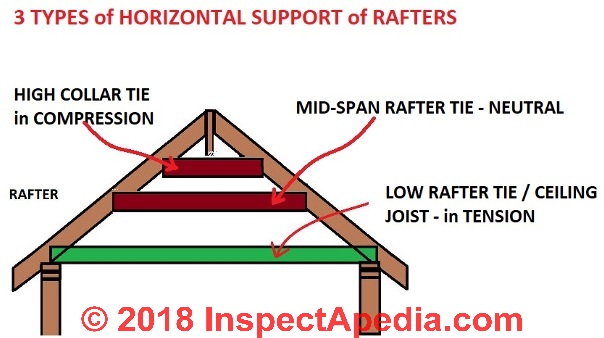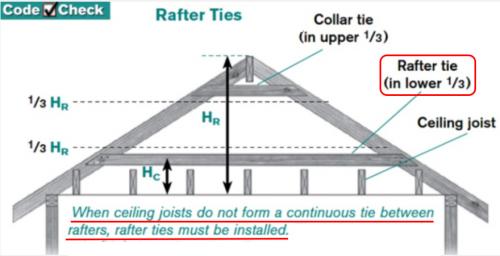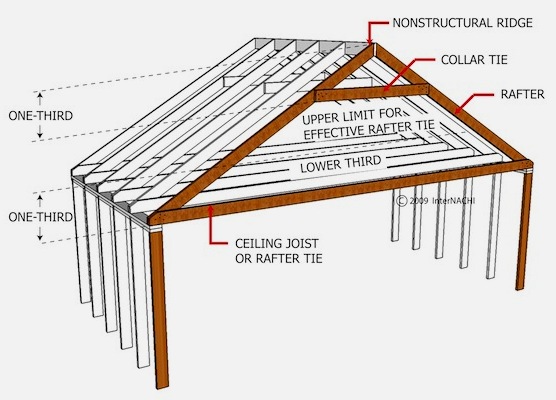The upper collar tie does not experience the tension that the lower rafter tie is resisting if that tension is resisted in the upper third the roof is probably on the ground.
Roof collar tie placement.
For example if the height of the ridge.
Collar ties should not be fixed more than one third or one half of the rise of the roof up from the wall plate.
In collar tie roof the horizontal tie is raised up from the feet of the rafters to the almost middle of the rafters.
Collar tie a tension tie in the upper third of opposing gable rafters that is intended to resist rafter separation from the ridge because of wind or unbalanced roof loads.
The tie will go from one side of a roof rafter to an adjacent rafter but on the opposite side.
This means that if you secure one end of the collar tie to the left side of a roof rafter you will nail it to the right side of the adjacent rafter.
A collar tie is a tension tie in the upper third of opposing gable rafters that is intended to resist rafter separation from the ridge beam during periods of unbalanced loads such as that caused by wind uplift or unbalanced roof loads from snow.
Roof classification of different types of roofs.
This raised up horizontal tie is known as the collar tie.
Collar tie is a colloquial term for collar beam.
Measure the vertical distance from the top of a ceiling joist to the ridge of the roof and divide the result by 3 to determine the height of the collar ties.
Laying out a common rafter for simple gable or shed roofs you need to learn this basic building block of roof framing.
Secure the opposite side in the same manner.
More about building and repairing roofs.
The 2015 international residential code does not require collar ties or collar beams.
The prescriptive provisions of the building code require rafter ties on each rafter pair and collar ties every 4.
The rafter ties are incorrectly labelled as collar ties.
Nail one end of the tie into the rafter with 3 inch nails.









